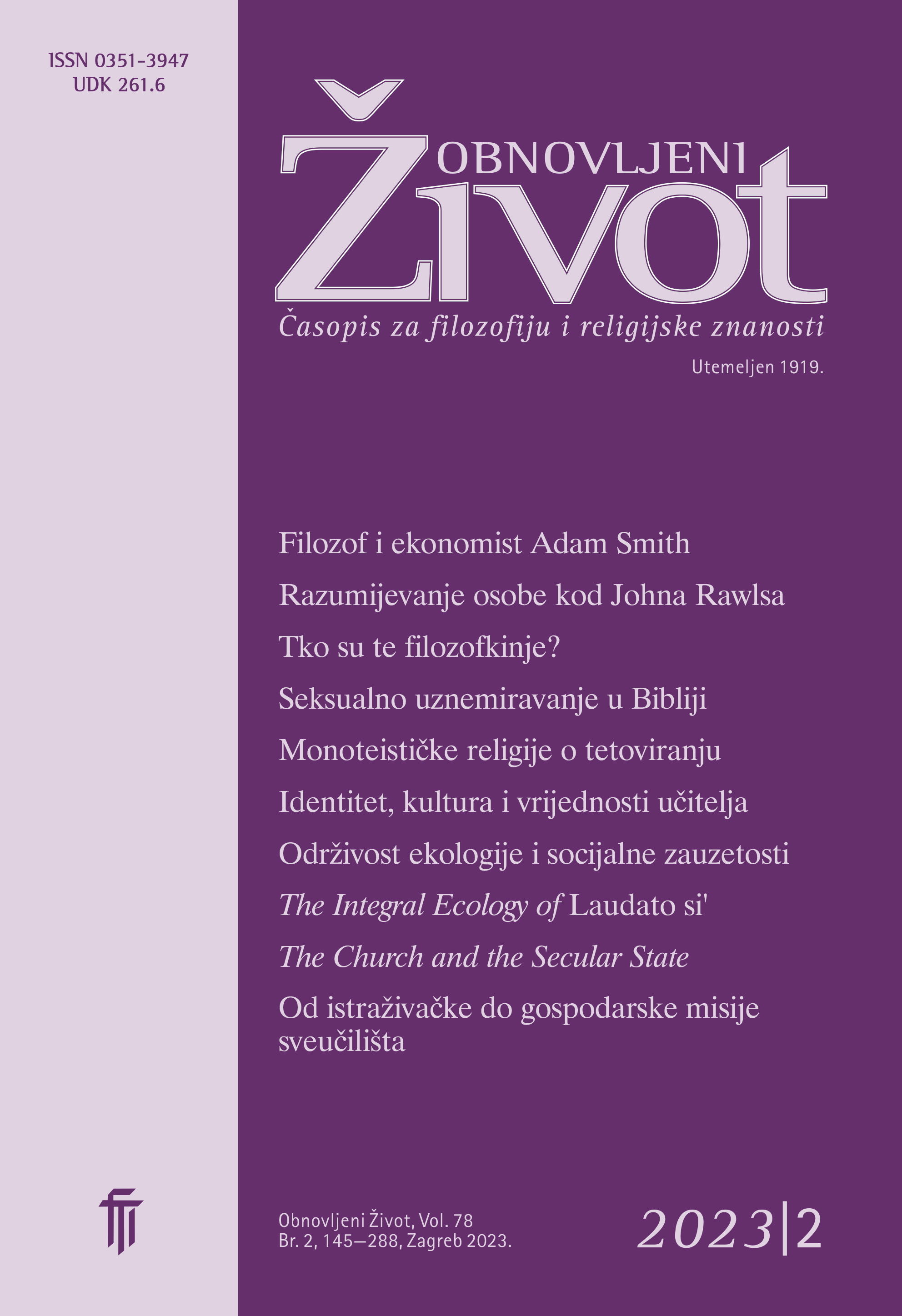The Tattoo Issue in Judaism, Islam and Christianity
Stajalište judaizma, islama i kršćanstva o tetoviranju
Keywords:
tattooing, tattoo, body, face, Judaism, Islam, ChristianityAbstract
The tattooing of human skin has been practised since ancient times. Tattoos had multiple meanings in tribal cultures. The ritual rendered the members of the tribe equal members of the community, advanced their social rank, allowed them to carry out new functions, and was a demonstration of their ability to endure pain; also, the tribe was defined and made recognizable as a result of its rituals. Rituals similarly affected individual members for they helped identity development of both the individual and the community. The custom was adopted by sailors and brought by them to Western civilization, while this type of „marking” had long existed in the East. In the beginning, sailors, prostitutes, slaves and convicts were tattooed. In mid–twentieth century tattooing was taken over by American street gangs from Japanese yakuza clans. It finally became a global fashion trend in recent decades and came to affect a large part of the European population through the American subculture. Yet Judaism, Christianity, and Islam — as religious legal systems — do not view this form of bodily self–harm favourably. Believers — be they Christians, Jews or Muslims — see the human body and face as a gift from God and therefore no correction thereof (excepting medical interventions) — tattooing in particular — may be performed. In this paper the views on tattooing of these three legal systems are presented.
Downloads
Published
Issue
Section
License
Jednom prihvaćeni članak obvezuje autora da ga ne smije objaviti drugdje bez dozvole uredništva, a i tada samo uz bilješku da je objavljen prvi put u Obnovljenom životu. Uredništvo će obavijestiti autora o prihvaćanju ili neprihvaćanju članka za objavljivanje.
Članci objavljeni u časopisu se, uz prikladno navođenje izvora, smiju besplatno koristiti u obrazovne i druge nekomercijalne svrhe.


